What Are the Essential Ingredients for Chicken Sausage?
The essential ingredients for chicken sausage are chicken thigh meat (1.5-2 lbs), cold water or ice (1/4 cup), ice-cold milk or buttermilk (1/4 cup), fish sauce or salt (1 tbsp fish sauce or 1 tsp salt), egg white (1 large), onion or shallot (1 small, finely grated), and black pepper to taste. These components work together to create moisture retention, proper binding, and balanced flavor in your homemade chicken sausage.
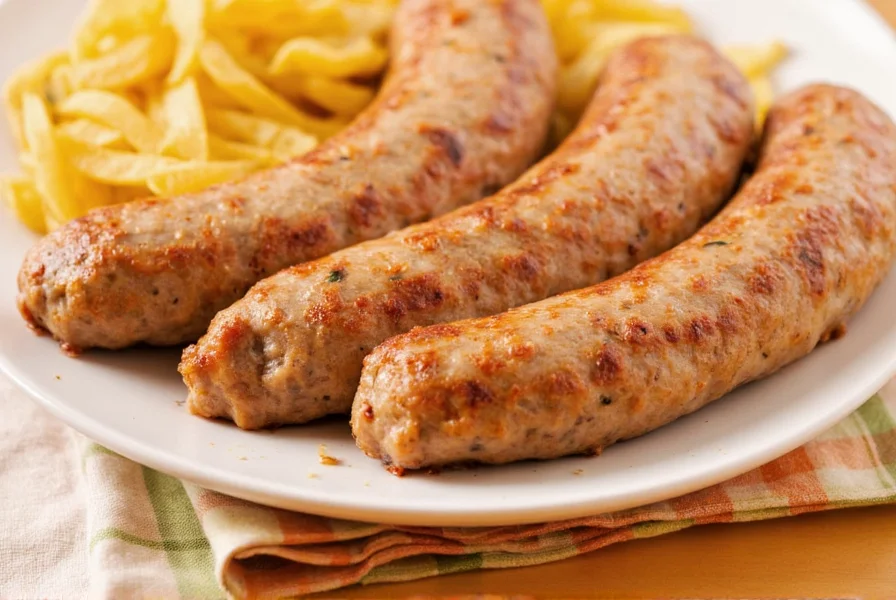
Why These Ingredients Are Critical for Perfect Chicken Sausage
Chicken's natural leanness (especially breast meat) creates unique challenges that require specific ingredients to overcome. Unlike pork sausage recipes, chicken sausage needs careful formulation to prevent dryness while maintaining proper texture and flavor. Here's why each essential component matters:
- Moisture Preservation: Chicken has only 2-3% fat when using breast meat (vs. 25-30% in pork), requiring strategic moisture retention techniques
- Binding Science: Without sufficient fat content, chicken sausage relies on protein extraction and natural binders to achieve proper cohesion
- Flavor Amplification: Chicken's mild flavor needs strategic seasoning to create depth without overpowering the meat
| Core Ingredient | Scientific Function | Professional Recommendation |
|---|---|---|
| Chicken Thigh Meat | Provides 8-10% natural fat content essential for moisture retention | Use 100% thighs for maximum juiciness; 70% thigh/30% breast for leaner option |
| Cold Water/Ice | Extracts myosin proteins during mixing for superior emulsion | Always use ice-cold (32-34°F); measure precisely (¼ cup per 2 lbs meat) |
| Milk/Buttermilk | Casein proteins improve water-holding capacity and tenderness | Buttermilk adds subtle tang; whole milk provides richer mouthfeel |
| Fish Sauce | Umami compounds enhance flavor while extracting binding proteins | 1 tbsp replaces 1 tsp salt with more flavor complexity |
| Egg White | Acts as natural hydrocolloid for superior binding without starch | Use only egg white (no yolk) at 4% of meat weight for optimal results |
| Fresh Onion | Enzymes break down proteins while adding moisture and flavor | Grate finely; use 5% of meat weight for optimal distribution |
| Freshly Ground Pepper | Volatile oils provide aromatic complexity that pre-ground lacks | Use Tellicherry peppercorns ground to medium-coarse texture |
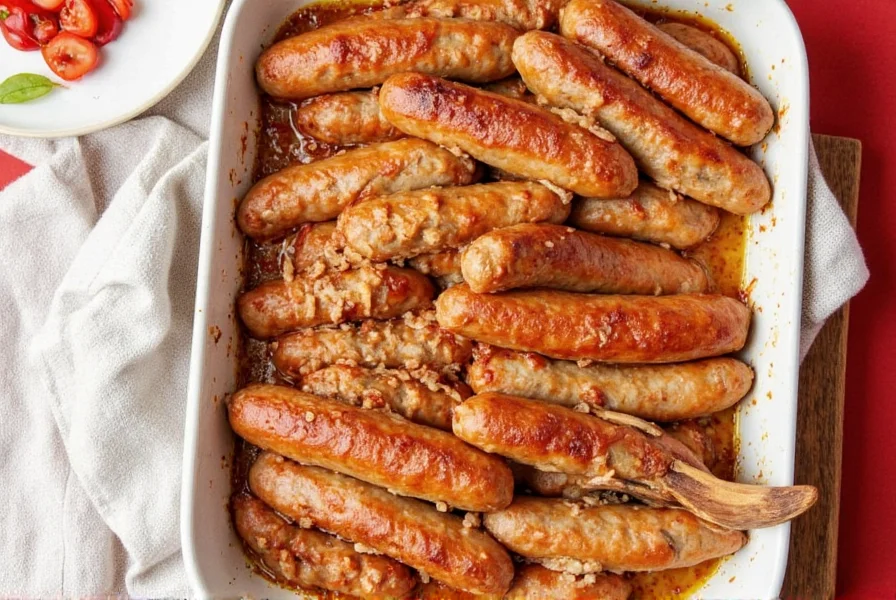
The Science Behind Moisture-Retaining Ingredients
Professional sausage makers rely on food science principles to combat chicken's natural dryness. The key is understanding protein behavior during processing:
Myosin Extraction Process
When chicken meat is mixed with salt and cold liquid, myosin proteins migrate to the surface, creating a sticky film that binds meat particles together. This emulsion traps moisture during cooking, preventing the dry, crumbly texture common in amateur chicken sausages.
Cold Temperature Importance
Maintaining temperatures below 35°F (2°C) during preparation is critical because:
- Prevents fat smearing which would cause greasiness
- Slows protein denaturation for better texture
- Reduces bacterial growth during extended mixing
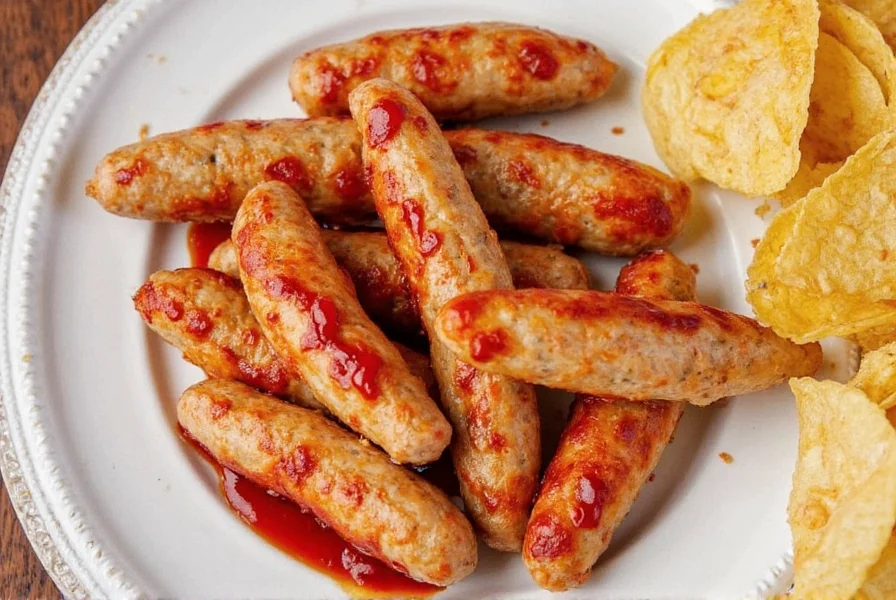
Advanced Binding Techniques for Perfect Texture
While basic recipes mention egg white as a binder, professional results require understanding binding hierarchies:
| Binding Method | Mechanism | Professional Application Tip |
|---|---|---|
| Salt-Induced Extraction | Myosin protein solubilization | Add salt early in mixing; allow 10-minute rest before additional ingredients |
| Cold Liquid Incorporation | Water-holding capacity enhancement | Add liquid gradually while mixing; stop when mixture becomes tacky |
| Egg White Binding | Protein coagulation during cooking | Whisk egg white to soft peaks before incorporating for maximum aeration |
| Starch Gelation | Water absorption and viscosity increase | Use rice starch (not flour) at 2% meat weight for clean flavor |
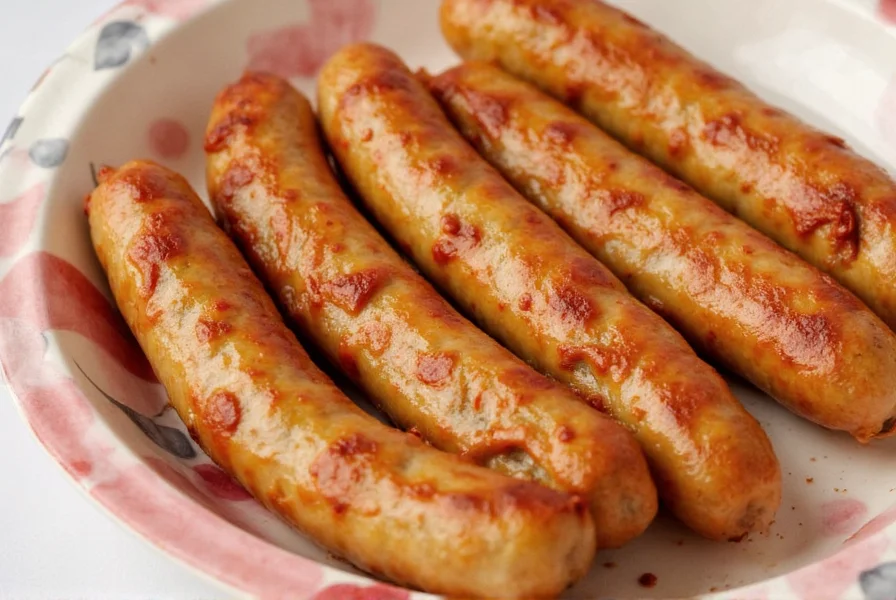
Ingredient Selection Guide: What Top Chefs Look For
Quality ingredients make the difference between acceptable and exceptional chicken sausage:
Chicken Selection Criteria
- Thighs vs. Breast: Thighs should have visible marbling (8-10% fat); breasts should feel firm with no gray spots
- Freshness Indicators: Slightly pink hue (not gray), firm texture that springs back when pressed
- Air-chilled vs. Water-chilled: Air-chilled retains more natural flavor and texture
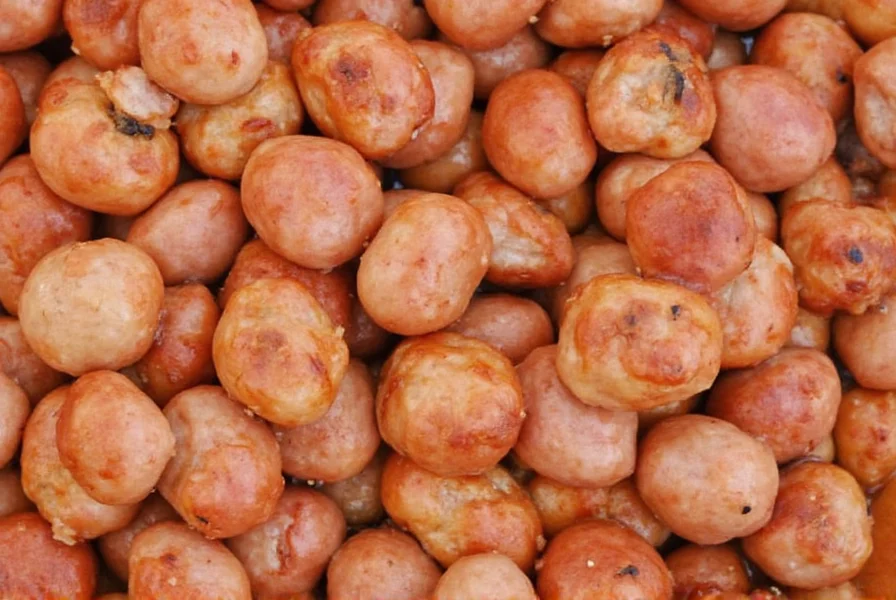
Professional-Grade Seasoning Techniques
- Freshly Ground Spices: Whole peppercorns ground immediately before use release maximum volatile oils
- Dry Brining: Salt meat 1-2 hours before processing for deeper flavor penetration
- Aromatic Layering: Add delicate herbs (parsley, chives) after mixing to preserve freshness
Common Mistakes That Ruin Chicken Sausage
Avoid these professional pitfalls that cause dry, crumbly, or flavorless results:
- Using Room Temperature Ingredients: Causes fat smearing and poor emulsion (always chill meat, bowl, and grinder parts)
- Overmixing the Meat: Creates tough texture; stop when mixture is uniform and slightly tacky
- Skipping the Test Patty: Always cook a small sample to adjust seasoning before making full batch
- Incorrect Fat Ratio: Less than 8% fat content guarantees dry results; supplement with olive oil if using breast meat
- Rushing the Chilling Process: Meat needs 30+ minutes in freezer before processing for optimal results
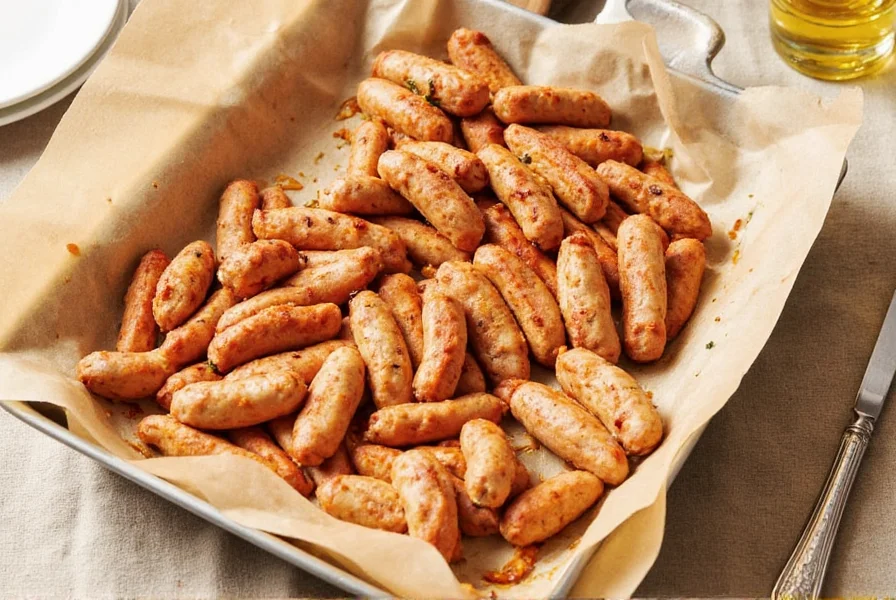
Expert-Recommended Flavor Combinations
While classic sage-apple works well, these professional combinations create restaurant-quality results:
| Flavor Profile | Exact Ingredient Ratios | Best Cooking Method |
|---|---|---|
| Mediterranean Lemon-Herb | 2 tbsp lemon zest, 3 tbsp chopped parsley, 1 tbsp thyme, 1 tsp oregano (per 2 lbs) | Medium heat grilling (5-6 minutes per side) |
| Smoky Spanish Chorizo-Style | 2 tbsp smoked paprika, 1 tbsp garlic powder, 1 tsp cumin, ½ tsp cayenne (per 2 lbs) | Cast iron searing then oven finish (325°F for 10 minutes) |
| Thai Coconut Curry | 3 tbsp red curry paste, 2 tbsp coconut milk, 1 tbsp fish sauce, 1 tsp ginger (per 2 lbs) | Simmer in broth then finish under broiler |
| Apple-Sage Breakfast Style | ¼ cup finely diced apple, 2 tbsp fresh sage, 1 tsp nutmeg, ½ tsp allspice (per 2 lbs) | Medium-low pan frying with duck fat |
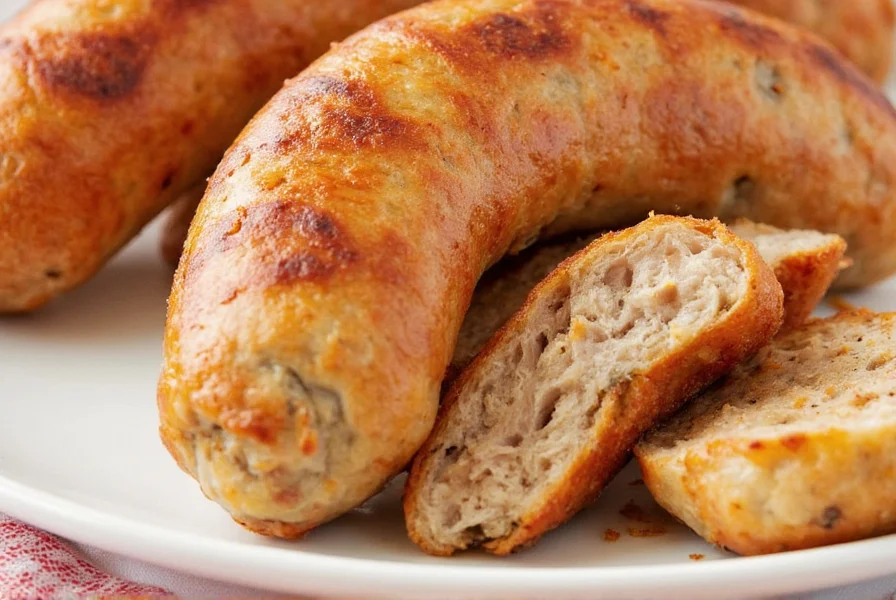
Frequently Asked Questions
What are the essential ingredients for chicken sausage that prevent dryness?
The critical moisture-retaining ingredients are chicken thigh meat (providing 8-10% fat), cold liquid components (water/milk for protein extraction), and proper binders (egg white). Specifically: 1) Use thigh meat exclusively or supplement breast meat with 3-4% olive oil, 2) Incorporate ¼ cup ice-cold liquid per 2 lbs meat, 3) Include 1 egg white per pound of meat for binding. These elements work together through food science principles to trap moisture during cooking.
Why does my chicken sausage always turn out dry despite following recipes?
Dry chicken sausage typically results from three technical errors: 1) Insufficient fat content (below 8%), 2) Inadequate protein extraction (not using enough salt/cold liquid), or 3) Temperature mishandling during preparation. Professional solution: Use 100% thigh meat, add 1 tbsp fish sauce (replaces 1 tsp salt with more flavor), incorporate ¼ cup ice-cold buttermilk, and maintain all ingredients below 35°F during processing. Always test a small patty first to adjust moisture levels.
What's the precise ratio of ingredients for perfect chicken sausage texture?
Professional chefs use these exact ratios per 2 lbs (907g) of chicken thigh meat: 1) 1.5-2% salt by weight (14-19g), 2) 12.5% cold liquid (113ml), 3) 4% egg white (36g), 4) 5% onion by weight (45g), 5) 0.5-1% black pepper by weight (4.5-9g). For binders: 1 egg white replaces approximately 14g of starch. These precise measurements create the ideal protein matrix for moisture retention without compromising flavor.
Can I substitute ingredients in chicken sausage without compromising quality?
Strategic substitutions work if you understand ingredient functions: 1) Replace buttermilk with coconut water for similar pH and moisture retention, 2) Use potato starch instead of egg white at 2% meat weight, 3) Substitute fish sauce with mushroom powder (1 tbsp) for umami. Never substitute the fat content requirement - if using breast meat, add 3-4% olive oil. Always maintain the 8-10% total fat content for proper texture.
How do professional kitchens keep chicken sausage moist during cooking?
Restaurant techniques include: 1) Pre-cooking poaching in 165°F (74°C) broth for 8 minutes before searing, 2) Using a water-steam combination in oven (½ cup water in roasting pan), 3) Never exceeding 160°F internal temperature. Home solution: Cook at medium-low heat, rest 5 minutes before slicing, and always use a meat thermometer. The critical factor is maintaining the protein structure through controlled temperature application.
Professional-Grade Chicken Sausage Formula
For consistently perfect results, use this chef-developed formula:
- Fat Content: Maintain 8-10% total fat (use thigh meat or supplement breast with oil)
- Water Activity: 12.5% cold liquid (water/milk combination)
- Binding Ratio: 4% egg white by meat weight
- Seasoning Precision: 1.75% salt, 0.75% black pepper, 5% onion by weight
Following these scientifically calibrated ratios ensures optimal moisture retention, proper texture, and balanced flavor in every batch. The key is understanding that chicken sausage requires different formulation principles than traditional pork sausages due to its lower fat content and different protein structure.


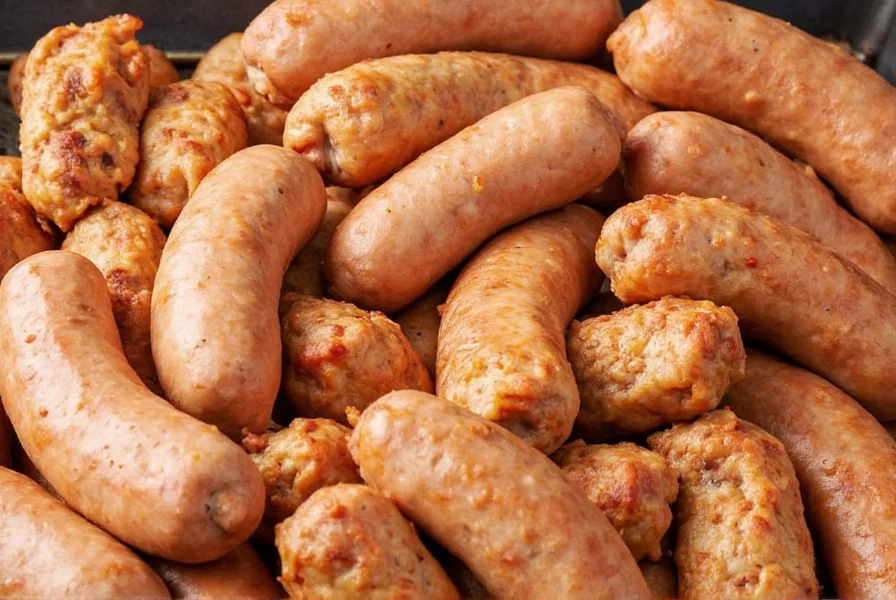









 浙公网安备
33010002000092号
浙公网安备
33010002000092号 浙B2-20120091-4
浙B2-20120091-4